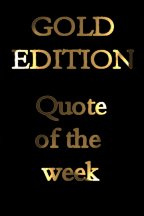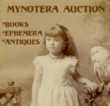|
|
|


|
|

|
|
by Craig Stark
#131, 19 January 2009
|
|
How to Buy and Sell Photobooks
Issue #32, #33 & #34
I've made a lot of money on photobooks over the years, and I must tell you that this is one of the easier genres to make money in. Here's why: Close your eyes and toss a brick into a room full of photobooks, and chances are you'll hit something of value - and there's a pretty good chance you'll hit something of significant value.
Reasons are several.
-
Generally, photobooks are expensive to produce. It isn't just a matter of photobooks being (usually) big; it's also because paper and binding must be of sufficient quality to ensure, respectively, the faithful replication of images and durability - and don't forget that it's more expensive to print images than text. Also, given this inherent expense and a relatively small, if intense, market overall for photobooks, they're typically printed in small numbers; small numbers, over time, often spell higher values, especially as a given photographer gains recognition. Note also that photobooks are not often reprinted.
-
Since photobooks are comprised of art, they are often designed as art objects, and this can be manifested in a variety of ways - decorative elements, fine bindings, innovative typeface design, etc., and are thus a pleasure to own.
-
When photobooks are published, they often represent the first, sometimes the only print appearance of a photographer's body or subset of work, and some or even many individual photographs contained in them may never be reprinted again in any format.
-
Similar to early recordings that can be remastered and thereby improved, advances in technology have enabled some publishers to reproduce photographs in books that are in some ways superior to the original prints. It can be argued, of course, that collectors generally prefer originals, but keep in mind that at least some prefer improved images.
In all, this set of circumstances gives rise to an interesting phenomenon: Photobooks are one of the few niches at least partially comprised of books that increase in value over time. This is doubly true of photobooks featuring unknowns who later make it big. Additional good news for booksellers: Photobooks are one of the few niches at least partially comprised of books that can sometimes be purchased new, in quantity, as remaindered copies in new bookstores at prices far less than what they can be resold for later on. Again, this is doubly true of photobooks featuring unknowns who later make it big. If market conditions are favorable, as soon as remaindered copies disappear, a slow but steady rise in value begins, and values may exceed original purchase prices in a matter several years, sometimes months.
Purchase this series and other issues of the Gold Edition
here.
|
|







|
|
|


